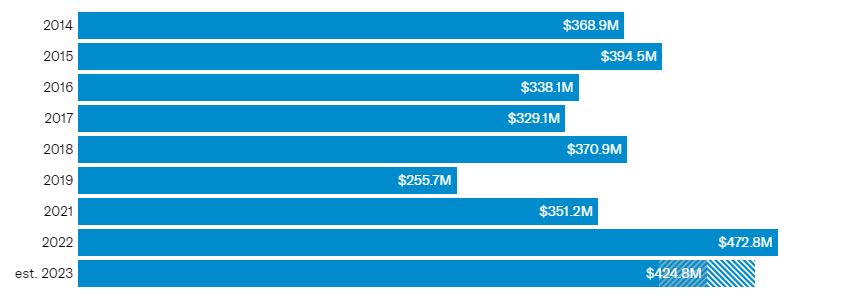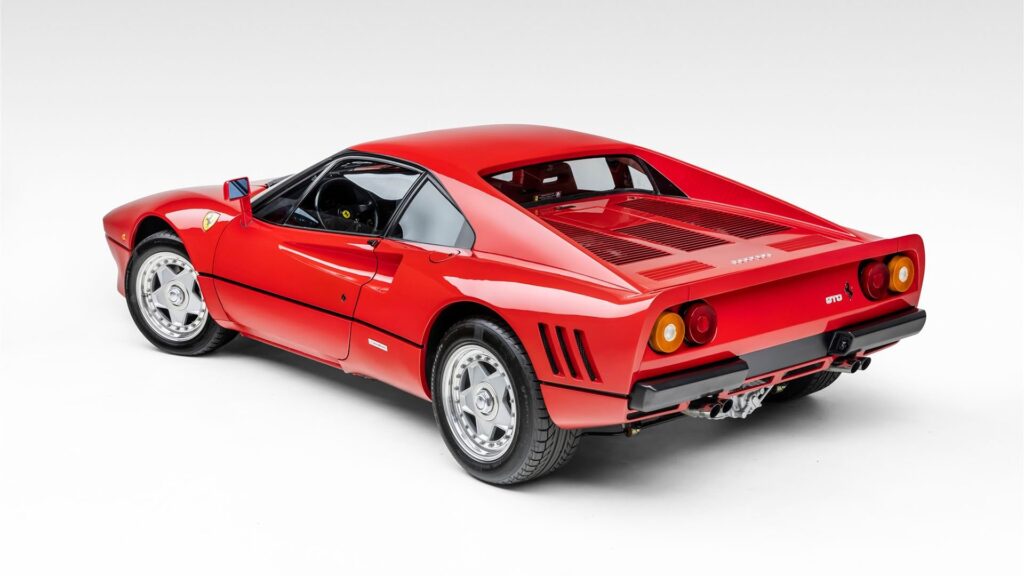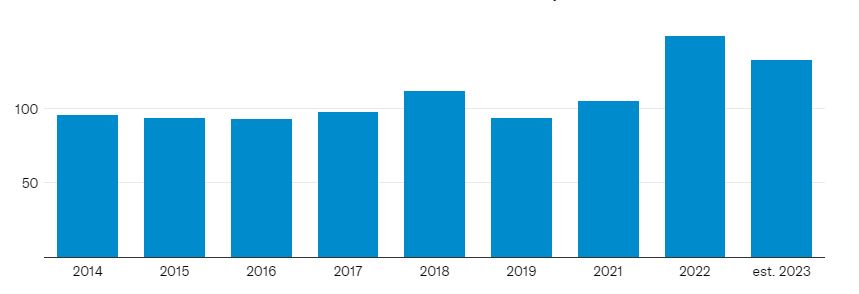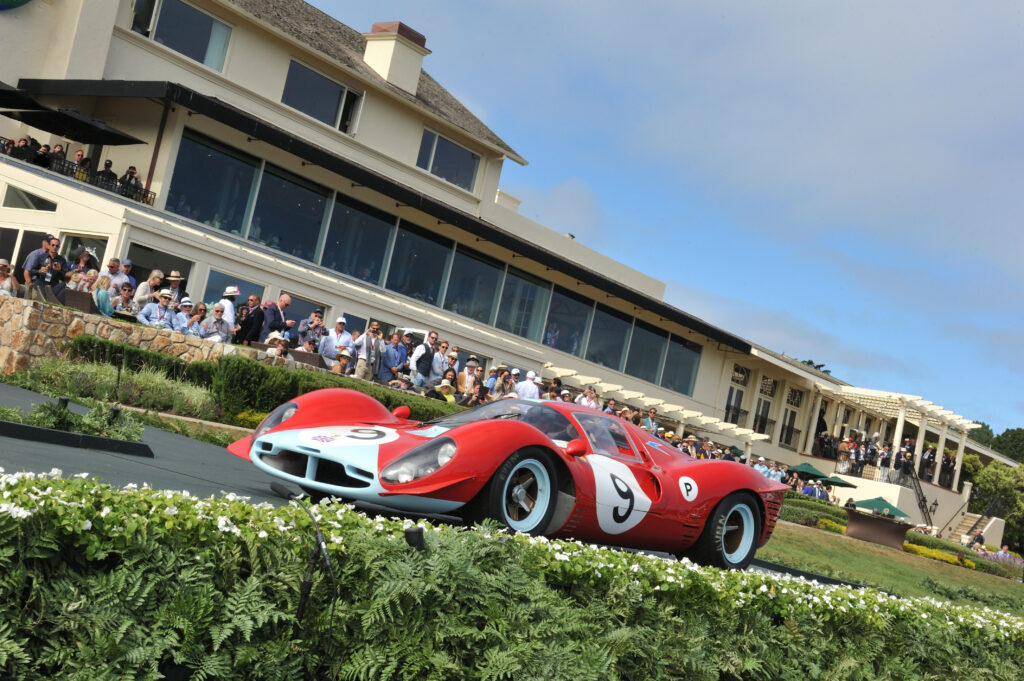2023 Monterey auctions poised to approach record totals

As we approach the Monterey Car Week auctions for 2023, we find ourselves in a similar situation to 2022. Last year, the market was beginning to cool, but despite this, we saw record sales (the final tally was nearly $473M). Fast forward to now, and the market has continued to cool in 11 of the past 13 months, but total sales at the Monterey auctions may reach another $400M year: we expect between $392M and $457M in total sales for 2023. At the low end, that would be third best behind 2022 and 2015. At the high end of that range, only 2022 would be greater.

Total Sales at Monterey will likely exceed $400M
How is that possible?
Monterey auctions attract the best cars. Typically, every other year, the annual global-auction high sale happens on the peninsula. Simultaneously, the top-selling car at auction every other year tends to be a Ferrari. We’re likely to see both of those patterns renewed at the Monterey auctions this year.

We’ll see nearly 133 $1M+ vehicles offered at the Monterey auctions in 2023, down from 149 in 2022. We expect to see slightly more cars than last year’s record 1025 listings—a few late entrants are still trickling in.

Number of $1M+ vehicles at the Monterey auctions for 2023 – Run lists aren't final, but the number of $1M+ vehicles at the auctions this year is down from 2022.
The top five lots all have the potential to be eight-figure cars, which is notable because we’ve only seen four cars sell above that level all year. Based on estimates or likely value, the top five in ascending order are:
How do we know the 412P is more valuable than the 250 LM? The former is rare: only four were constructed and two survive, while 32 examples of the 250 LM were built. We also rarely see one at auction. It was way back in 2000 when one last sold—for $5.6M—at Pebble Beach, too.

Beyond those top five, we’ll have our eyes on cars with ties to Le Mans. It was a big year for the storied race, which celebrated its 100th anniversary and resulted in a Ferrari victory for the first time since 1965. As a consequence, there’s been a recent uptick of interest in cars with Le Mans history. 12 vehicles that have run the race will be consigned to the auctions, and reflect the innovation and variety across some of racing’s great eras. The dozen range from a front-wheel drive 1928 Alvis at Bonhams to a 2001 Ferrari 550 by Prodrive at RM Sotheby’s.
More broadly, nearly 200 vehicles listed at the Monterey auctions this year have previously sold at auction in the past ten years. The average time between these auction sales is just over 3.5 years—we may start to see what happens when pandemic purchases are unwound at scale. Also, assuming the vehicles sell at their low estimate, the average return would be 14 percent, a two-point drop from last year. That suggests that this year’s estimates are more realistic.

The ratio of no-reserve lots is up to 39 percent this year from 33 percent in 2022. Despite the auctions boasting more no-reserve lots with more realistic estimates, with the cooling market, we still expect the sell-through rate to dip slightly, from 78.0 percent to 77.7.
The demographics of owners with vehicles consigned to the auctions show Monterey is unlike the rest of the market. In the past few years, 61 percent of sellers at auctions were born before 1965 (boomers and older). However, this year, their share of consigned vehicles is 80 percent for the Monterey auctions.
With the Monterey auctions typically representing 20 percent of the total sales for live auctions each year, and with the first half of 2023 in the rearview mirror, we can compare how this year’s market is performing against past years. Reflecting the cooling market, total sales at live and online auctions will likely be slightly less than 2022’s record-setting pace.